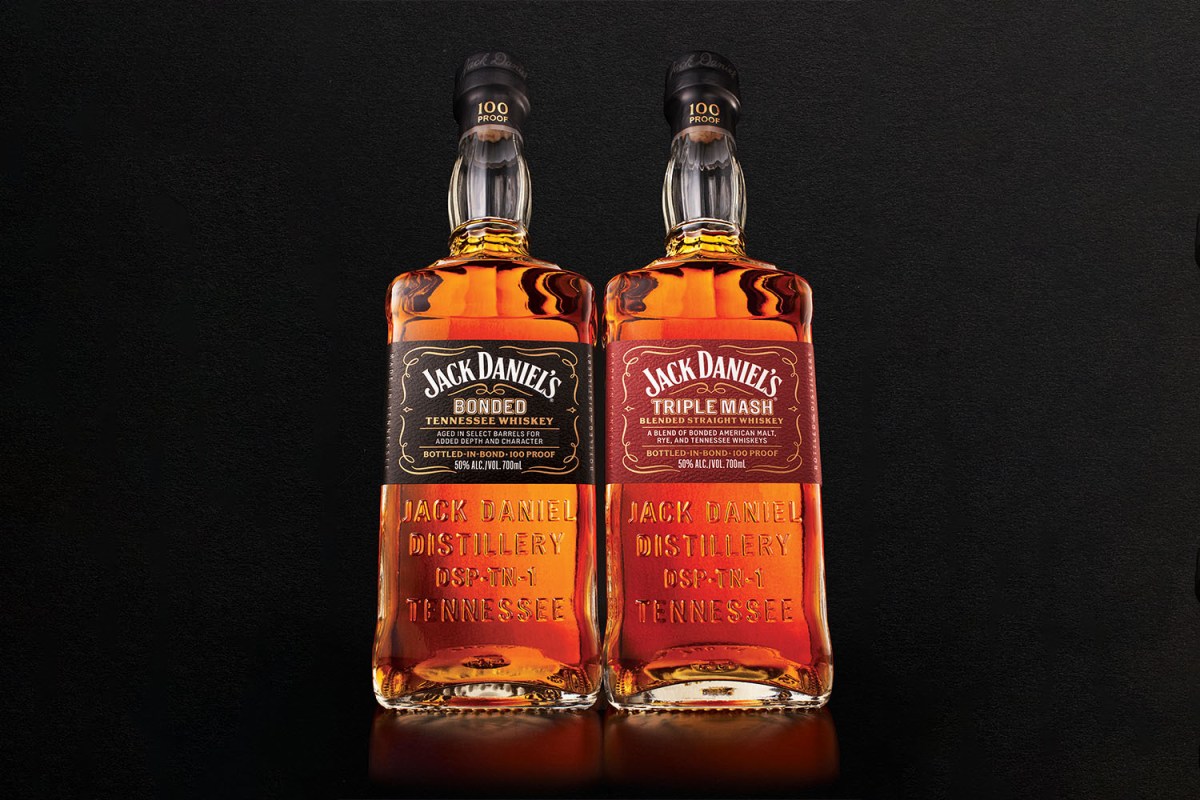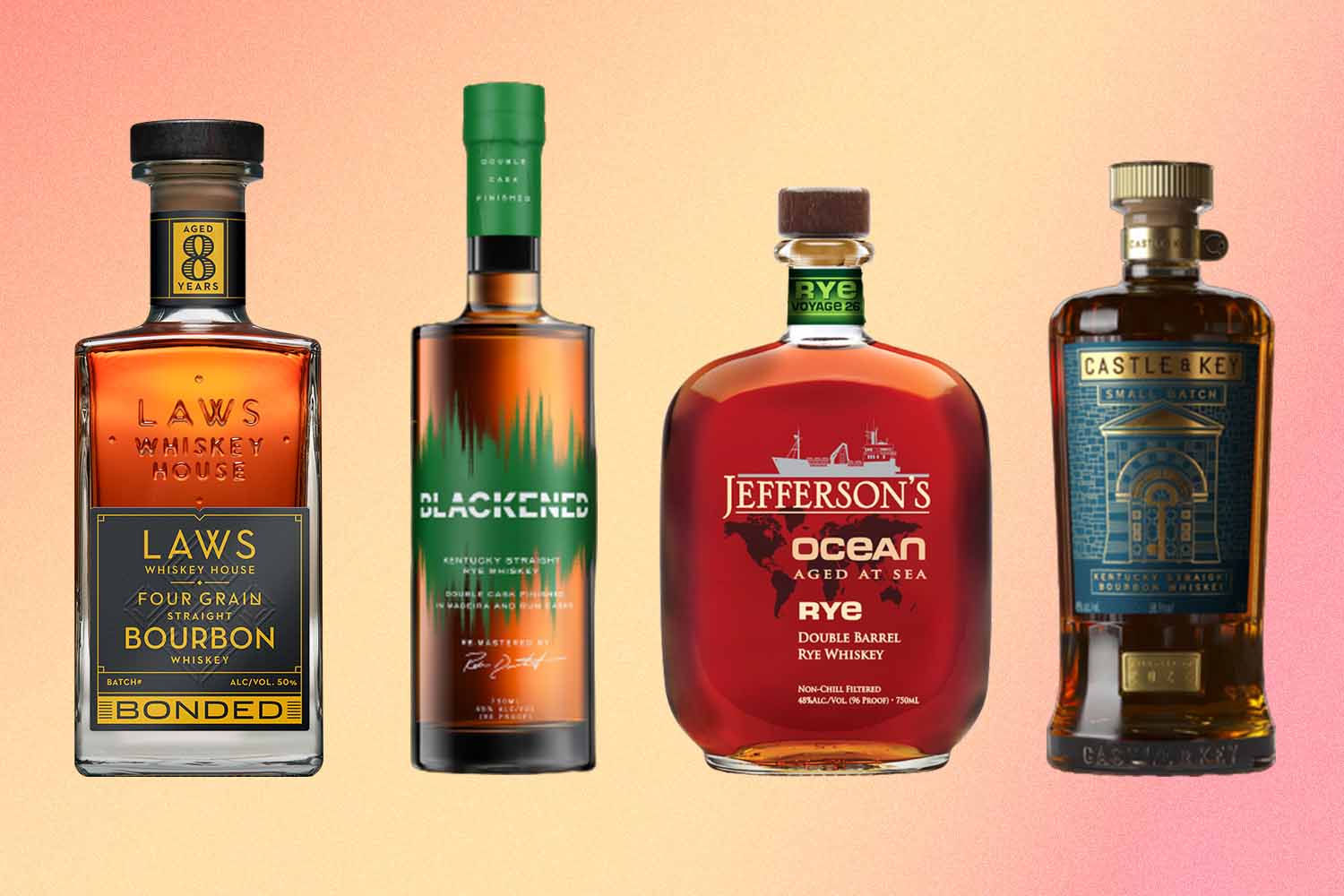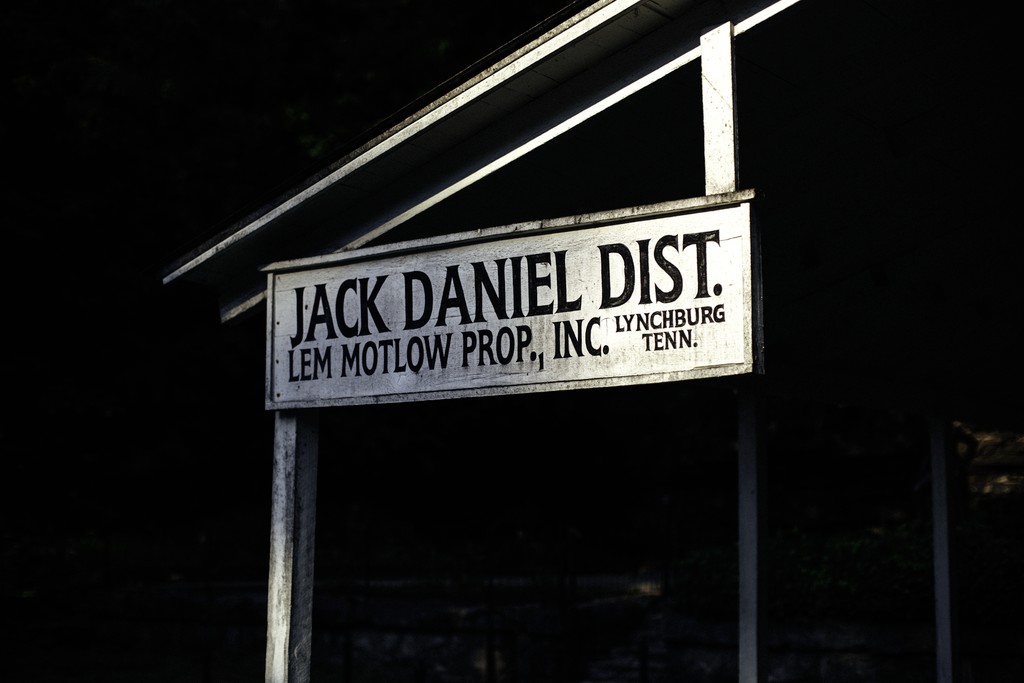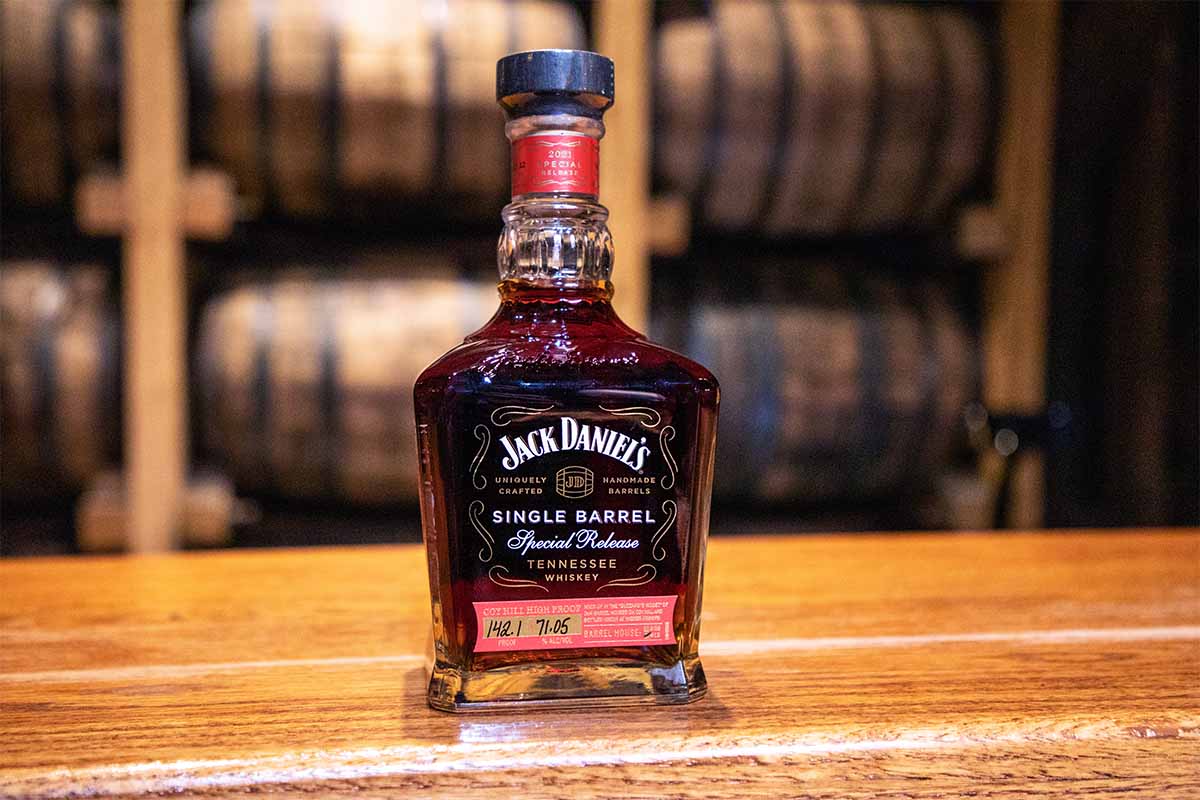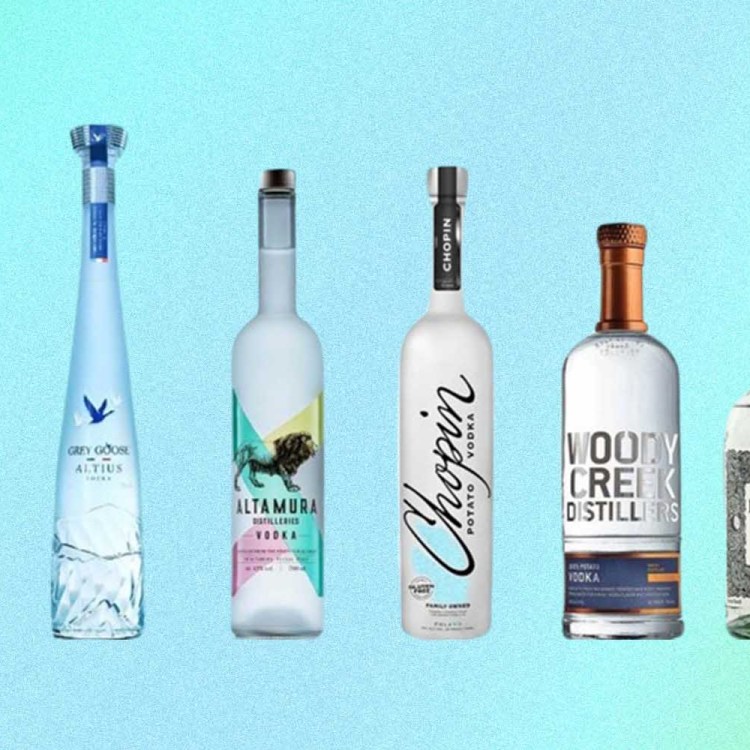“Innovation has been a huge priority here in the past few years.”
That’s a bold statement from Chris Fletcher, the Master Distiller for Jack Daniel’s, the largest whiskey brand in the world and a company that’s pretty much known globally for its iconic square Old No. 7 Tennesse whiskey bottle.
That flagship bottle makes up roughly 95% of what Jack Daniel’s sells every year. Add in a few percentage points for Honey, the smoother Gentleman Jack and some other flavored products (like Tennessee Fire), and there doesn’t seem like there’s a lot of room for more experimental or artisanal expressions.
But over the past few years, Fletcher — a native of the Tennessee whiskey brand’s home of Lynchburg, TN, and grandson of late Master Distiller Frank “Frog” Bobo — has been quarterbacking a concerted effort to help the distillery branch out. While Jack Daniel’s has previously dipped its toes into the craft whiskey scene — single barrel, rye, “Sinatra Select” — the past two years have seen Jack Daniel’s release its first post-Prohibition age statement bottle (10-Year) and the unexpected Coy Hill High Proof, an extremely limited release featuring a seemingly ridiculous proof point that stretched up to 148.3.

While that latter release was somewhat of a surprise, Fletcher is adamant that Jack Daniel’s has an innovation roadmap. “Everything we do is very calculated,” he told us at the unveiling of the brand’s two new releases in Lynchburg. “This is not an accident. Nothing we release is a barrel that is ‘lost’ or forgotten. We’re focused, and this all is part of a plan that we’ve been working on since 2014.”
Part of that plan arrived this month in the form of two new like-minded releases, Jack Daniel’s Bonded and Jack Daniel’s Triple Mash. Permanent additions to the JD lineup — the company is toutings these bottles as their first “super-premium line extension in 25 years” — both of the new expressions are Bottled-in-Bond releases, a designation that came about all the way back in 1897. At the time, the Bottled in Bond Act (one of the country’s first consumer protection laws) was a way to combat some bad actors in the whiskey space. Essentially, a bonded whiskey must be distilled by a single distiller during a single season, matured in a government bonded warehouse for at least four years and bottled at 100 proof.
One thing a bonded whiskey accomplishes, both back in 1897 and today, is that it acts as a marker of quality control. “Now you have so many non-producing brands entering the whiskey market,” former Jack Daniel’s Master Distiller Jeff Arnett told me a few years back. “Because of the guidelines, a bottled-in-bond product will come from the manufacturers. Those brands who developed themselves purchasing liquids — and many of them are successful — they can’t do bottled in bond. It’s the old manufacturers re-asserting ourselves; [it’s saying] we are the whiskey makers.”
And that’s a designation that Fletcher and his team, which includes Assistant Distiller Lexie Phillips, are trying to revive. They aren’t just a logo on a T-shirt.
“We’re in 170 countries, and in a way, Jack Daniel’s has become generic for ‘whiskey,’” says brand historian Nelson Eddy. “But it hasn’t always been this huge thing. We still make the whiskey in a very old-time way. It’s still a craft product.”
That craft might get lost if you simply drink Jack Daniel’s at a bar, or even if you take the hour-and-a-half trip out of Nashville to visit the distillery’s home. The thousands of visitors who flock to Lynchburg every year probably leave with little more than a t-shirt, a fun picture taken next to the monument of Jack Daniel — he was short, by the way — and newfound appreciation and knowledge of charcoal mellowing, the process that differentiates bourbon from Tennessee whiskey.
(One thing that has changed at the distillery: Between my first visit there in 2016 and then again in April of this year, there’s been more of a concerted effort to mention the contributions of Nathan “Nearest” Green, an enslaved man who befriended and mentored a young Jack Daniel and was later hired as the distillery’s first Master Distiller.)
What casual drinkers might be missing is what makes Jack Daniel’s special, and that’s the processes that actually make it easier and even advantageous for this gigantic and iconic brand to take some real chances. Basically, when you have 90+ on-site barrel houses and own your own cooperages (which no other major distilleries can claim), you have some built-in advantages when it comes to picking casks or setting aside some unique mash bills.
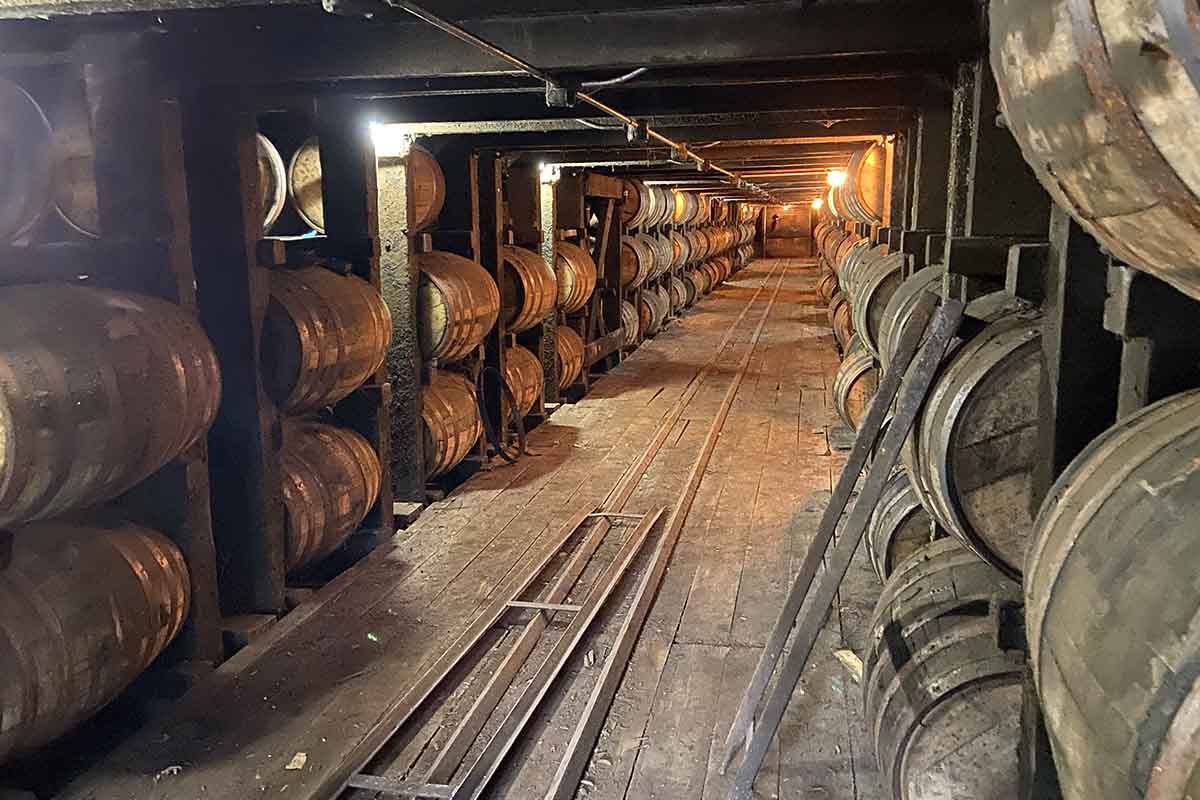
Plus, you can nerd out. Fletcher spent two hours painstakingly discussing the distillery’s proprietary yeast, which imbues much of the flavor across the entire Jack Daniel’s line. It’s a luxury that a smaller distiller couldn’t easily replicate.
All of this brings us back to the two new bottles.
Visually, the packaging of the new Bonded series is a throwback to the bottles Jack Daniel’s was producing back in 1895. Jack Daniel’s Bonded uses the same mashbill as Old No. 7 — it’s 80% corn, 12% malted barley and 8% rye, but now at 100 proof. The barrels were selected with an emphasis on whiskey that featured a darker, deeper color; this leads to an expression that’s more oak-forward and spicier (both in a cinnamon/baking spices kind of way, but also with the rye standing out more than usual) than Old No. 7.
“It hits a sweet spot with the proof,” adds Fletcher. “We have some nice sipping whiskeys and we have ones that are great to mix. This one is geared toward classic cocktails — it’s not a full-on barrel proof, but it’s balanced.”
More for Whiskey Lovers
The Best New Whiskeys to Drink This May
Including a Jefferson rye aged at sea, A$AP Rocky’s Canadian blend and a 36-year old single malt with an NFT angleThe real standout? The new Jack Daniel’s Triple Mash Blended Straight Whiskey, an unlikely marriage of three straight Bottled-In-Bond whiskeys – 60% Jack Daniel’s Tennessee Rye, 20% Jack Daniel’s Tennessee Whiskey and 20% Jack Daniel’s American Malt. “I don’t know any other blended Bottled-in-Bond whiskeys, and I didn’t know you could even do that kind of blend for the longest time,” says Fletcher.
While very classic Jack Daniel’s on the nose, the malt provides a creamy mouthfeel that contrasts nicely with the spice of the rye. But there’s also fruit, honey, biscuit and a softer oak note here, which all coalesce on a long-lasting finish.
One other way Jack Daniel’s can use its sheer size to its advantage? These “premium” offerings aren’t reflected in the price: You’ll be spending about $30-$33 for each bottle, or only a few bucks more than Old No. 7.
During my visit, Fletcher and Philips hinted at some other bold new expressions arriving in the near future: More (and longer) age statement releases. And a bonded American malt…which, technically, could be called an American Single Malt, which might surprise some craft whiskey drinkers.
While all of this seems like breaking new ground for the oldest registered distillery in the U.S., Eddy — the brand historian who’s been with Jack Daniel’s since 1987 — sees the new expressions a little differently. “We’ll have a new product or two out every year now, so things have changed,” he admits. “But also, a lot hasn’t. A lot of what we’re doing still has a basis in our history.”
Note: The pre-orders for the new Jack Daniel’s Bonded releases have already sold out on ReserveBar, but again, these’ll be permanent additions to the distillery’s core line.
Join America's Fastest Growing Spirits Newsletter THE SPILL. Unlock all the reviews, recipes and revelry — and get 15% off award-winning La Tierra de Acre Mezcal.
